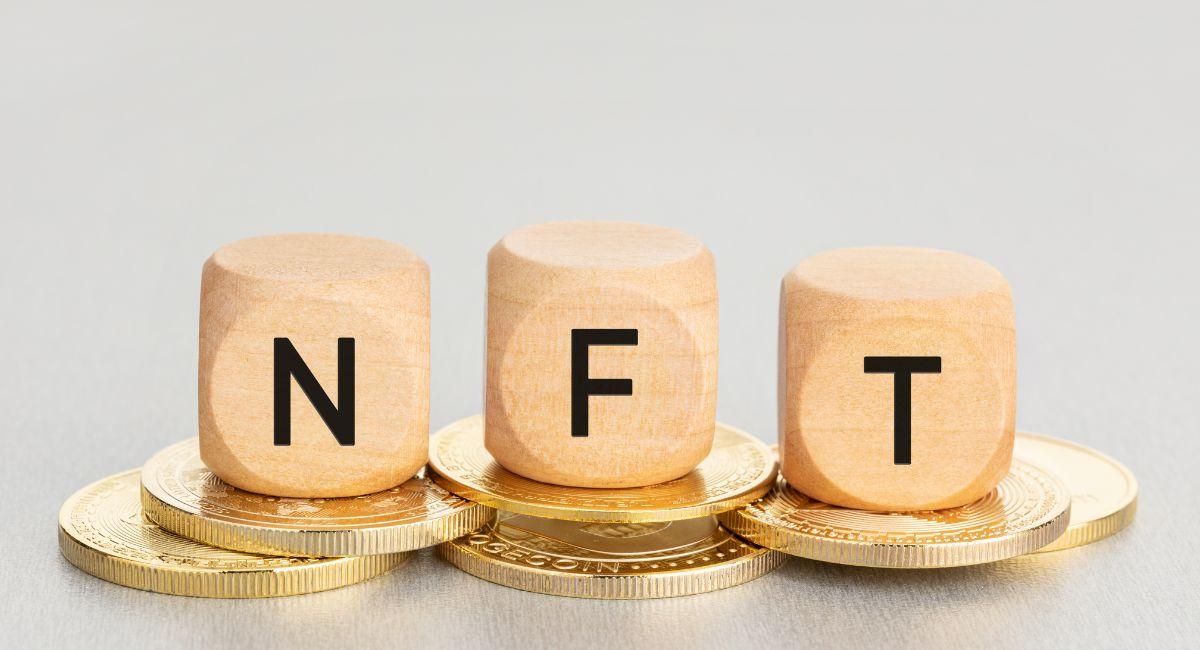Your Ultimate Guide To Lazy Minting And Its Top 10 Benefits In NFT World

Lazy minting in the context of NFTs (Non-Fungible Tokens) refers to a minting approach where the actual creation or minting of the NFT on the blockchain is deferred until a specific condition is met or triggered. This approach contrasts with traditional minting, where tokens are created and recorded on the blockchain immediately upon initiation.
In lazy minting, the metadata and details of the NFT are prepared and stored off-chain before the minting process. The NFT smart contract is then deployed, and the token is minted on the blockchain only when certain criteria are fulfilled. This could be triggered by a user action, a specific event, or any predefined condition.
What is Lazy minting in the NFT world?

Lazy minting in the NFT (Non-Fungible Token) world is an approach that allows creators to delay the on-chain minting of tokens until certain conditions are met. Unlike traditional minting, where tokens are created immediately upon initiation, lazy minting offers flexibility and cost-efficiency. Here’s a breakdown of lazy minting in the NFT world:
1. Off-Chain Preparation:
- Creators prepare the metadata and details of the NFT off-chain. This includes information about the digital asset, such as title, description, and associated files.
2. Smart Contract Deployment:
- The NFT smart contract, containing the logic for lazy minting, is deployed on the blockchain. This contract defines the conditions under which minting will occur.
3. Conditional Minting Logic:
- Developers program the smart contract with conditional minting logic. Minting might be triggered by user interactions (e.g., a purchase), reaching a specific milestone, or any predefined conditions set by the creator.
4. Metadata Storage:
- The metadata prepared off-chain, including details about the NFT, is stored using decentralized solutions like IPFS. This ensures accessibility and resilience.
5. Gas Fee Optimization:
- Lazy minting reduces overall gas fees as minting occurs only when necessary, avoiding unnecessary blockchain transactions.
6. User Interaction:
- Minting can be triggered by user actions, adding an interactive element to NFTs. For example, users might mint a personalized NFT by completing specific actions.
7. Flexibility for Creators:
- Creators have more time to finalize and perfect the details of their NFTs before committing them to the blockchain. This allows for adjustments and updates without immediate on-chain consequences.
8. Security Considerations:
- Robust security measures, including smart contract audits, are essential to identify and address any vulnerabilities associated with the lazy minting process.
9. Community Engagement:
- Transparent communication with the community is crucial. Creators and developers should inform users about the lazy minting process, conditions for minting, and any relevant updates.
Also, read- The Social Impacts Of NFTs: Exploring The Rise Of Non-Fungible Tokens
Understanding the key aspects of lazy minting in NFT

Lazy minting in the Non-Fungible Token world is an innovative approach that allows creators and developers to defer the actual minting of tokens on the blockchain until specific conditions are met. This method provides flexibility, reduces gas fees, and offers a dynamic user experience. Here’s an ultimate guide to understanding and implementing lazy minting in the Non-Fungible Token space:
1. Conceptual Understanding:
- Minting Deferred: Lazy minting delays the on-chain creation of NFTs until a triggering event occurs. This can be a user action, a specific event, or any predefined condition set by the creator.
2. Off-Chain Metadata Preparation:
- Metadata and Details: Creators prepare the metadata and details of the Non-Fungible Token off-chain before the actual minting process. This includes information about the digital asset, such as title, description, and associated files.
3. Smart Contract Deployment:
- Deploying the Smart Contract: The smart contract, which includes the logic for lazy minting, is deployed on the blockchain. This contract defines the conditions under which minting will occur.
4. Conditional Minting Logic:
- Event Triggers: Developers program the smart contract with conditional minting logic. Minting might be triggered by user interactions (e.g., a purchase), external events (e.g., reaching a specific milestone), or any other predefined conditions.
5. Gas Fee Optimization:
- Reduced Gas Fees: Lazy minting can reduce overall gas fees for creators and users. Minting occurs only when necessary, avoiding unnecessary blockchain transactions and associated costs.
6. Metadata Storage:
- Decentralized Storage: The metadata prepared off-chain, including details is often stored using decentralized solutions like IPFS. This ensures accessibility and resilience.
7. Flexibility for Creators:
- Preparation Time: Creators have more time to finalize and perfect the details of their NFTs before committing them to the blockchain. This allows for adjustments and updates without immediate on-chain consequences.
8. User-Driven Experiences:
- Interactive NFTs: Lazy minting enables more interactive and user-driven NFT experiences. For example, users might trigger the minting of a personalized Non-Fungible Token by completing a specific action.
9. Smart Contract Upgradability:
- Flexible Contracts: Developers may design smart contracts with upgradability in mind. This allows for future adjustments and improvements to the minting logic without disrupting existing Non-Fungible Token.
10. Security Considerations:
- Security Audits: Robust security measures, including thorough smart contract audits, are essential to identify and address any vulnerabilities associated with the lazy minting process.
11. Community Engagement:
- Communication: Transparent communication with the community is vital. Creators and developers should inform users about the lazy minting process, conditions for minting, and any relevant updates.strong> Transparent communication with the community is vital. Creators and developers should inform users about the lazy minting process, conditions for minting, and any relevant updates.
Completely new and wondering what all this Ordinal fuzz is all about but lazy to read?
— Teacher Kevz (@teacherkevz_nft) March 3, 2023
Presenting:
“ORDINAL + KUBZ for NOOBS explained in under 2 minutes”
Have fun minting!@Yogapetz @keung pic.twitter.com/HyX5phWn9J
Top 10 Benefits of Lazy Minting

Lazy Minting in the NFT world introduces a set of revolutionary benefits that reshapes the conventional dynamics of token creation and ownership. This innovative approach, decoupling metadata creation from on-chain minting, not only caters to the diverse needs of creators and collectors but also brings about a paradigm shift in the overall user experience within the NFT ecosystem.
-
Enhanced Creativity and Iteration: Lazy Minting empowers content creators by allowing them to focus on the creative aspects of their NFTs without the pressure of immediate on-chain commitment. This fosters a more iterative and thoughtful creative process, as artists can refine and optimize their digital assets before permanently minting them on the blockchain.
-
Transparent and Informed Collecting: For collectors, Lazy Minting provides unprecedented transparency. Before making a purchase decision, users can explore the metadata, details, and provenance of NFTs. This transparency ensures informed collecting, allowing users to evaluate the intrinsic value of an NFT before committing to ownership.
-
Reduced On-Chain Costs: Lazy Minting minimizes on-chain transactions by separating metadata creation from minting. This reduces the associated gas fees and transaction costs, making it a cost-effective solution for both creators and collectors. It aligns with sustainability goals by optimizing blockchain resource usage.
-
Flexible Tokenization: The flexibility offered by Lazy Minting enables creators to choose when and how they tokenize their assets. This flexibility accommodates various creative workflows, allowing artists to adapt to project timelines, collaborate more effectively, and synchronize tokenization with marketing strategies.
-
Improved Asset Management: Creators benefit from improved asset management as Lazy Minting allows for careful curation of metadata and associated details. Artists can organize and refine their NFTs before committing them to the blockchain, streamlining the management of digital assets and ensuring a cohesive and curated collection.
-
Customized Metadata Presentation: With Lazy Minting, creators have the freedom to present and format metadata in a way that enhances the narrative of their NFTs. This customization contributes to a more engaging and immersive experience for collectors, as the metadata becomes an integral part of the overall storytelling associated with each digital asset.
-
Community Engagement and Feedback: The delay between metadata creation and on-chain minting provides an opportunity for creators to engage with their community and gather feedback. This interaction can be valuable in shaping the final version of an NFT, fostering a sense of community involvement and collaboration in the creative process.
-
Risk Mitigation: Lazy Minting mitigates the risk associated with on-chain errors or unforeseen circumstances during the tokenization process. Creators can review and refine metadata before committing to the blockchain, reducing the likelihood of errors and ensuring a smoother minting process.
-
Marketplace Adaptability: Lazy Minting is adaptable to various NFT marketplaces and platforms. This adaptability ensures that creators can leverage the benefits of Lazy Minting across different ecosystems, reaching a broader audience and maximizing the exposure of their digital assets.
-
User-Centric Experience: Ultimately, Lazy Minting contributes to a more user-centric experience within the NFT world. Both creators and collectors have greater control over the process, allowing for personalized and deliberate engagement with digital assets. This user-centric approach is pivotal in shaping the future of NFT adoption and utilization.
In summary, the benefits of Lazy Minting extend far beyond the conventional paradigms of NFT creation and ownership. By offering enhanced creativity, transparency, cost-effectiveness, flexibility, and community engagement, Lazy Minting emerges as a transformative force in the NFT world, redefining the way digital assets are created, shared, and experienced.
Conclusion
In conclusion, Lazy Minting represents a paradigm shift in the creation and management of Non-Fungible Tokens (NFTs), introducing a more flexible and user-friendly approach to minting digital assets on the blockchain. This innovative concept challenges the traditional minting process by decoupling the creation of metadata and the actual tokenization of assets, offering creators and collectors increased control and efficiency in the NFT space.
Lazy Minting enables content creators to generate and finalize the associated metadata for their NFTs without immediately committing to the on-chain minting process. This bifurcation of tasks allows for careful curation, detailed descriptions, and the establishment of provenance for the digital asset before it is permanently recorded on the blockchain. This not only streamlines the creative process but also provides an opportunity for creators to refine and optimize their NFT listings before the tokens are officially minted.
For collectors, Lazy Minting presents a novel approach to purchasing NFTs. Unlike traditional minting, where tokens are generated at the point of purchase, Lazy Minting allows collectors to explore and evaluate the NFT’s metadata and associated details before deciding to mint and take ownership. This added layer of transparency and deliberation enhances the overall user experience, allowing collectors to make more informed decisions and engage with the NFT ecosystem at their own pace.
The flexibility inherent in Lazy Minting aligns with the evolving needs and preferences of both creators and collectors in the rapidly expanding NFT market. Creators can iterate on their creations without the immediacy of on-chain commitment, fostering a more iterative and thoughtful creative process. Collectors, on the other hand, benefit from increased transparency and the ability to explore NFT metadata before making a purchase, contributing to a more informed and engaging collecting experience.
As Lazy Minting continues to gain traction, it is reshaping the dynamics of NFT creation and ownership, offering a glimpse into the future of a more user-centric and efficient blockchain-based digital asset ecosystem. This innovative approach holds the potential to redefine standards and practices within the NFT space, providing a framework that adapts to the diverse and dynamic needs of its participants, ultimately contributing to the maturation and sustainability of the NFT market.




























































